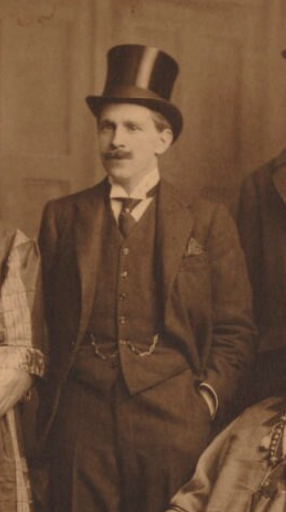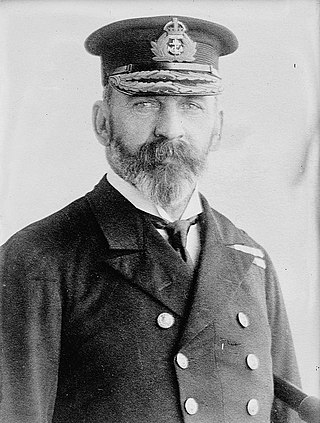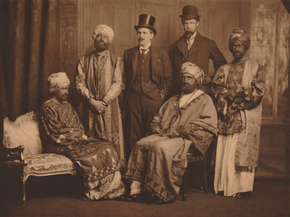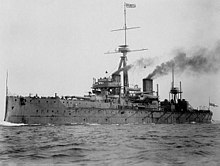
Adeline Virginia Woolf was an English writer. She is considered one of the most important modernist 20th-century authors. She pioneered the use of stream of consciousness as a narrative device.

The Bloomsbury Group or Bloomsbury Set was a group of associated English writers, intellectuals, philosophers and artists in the early 20th century. Among the people involved in the group were Virginia Woolf, John Maynard Keynes, E. M. Forster, Vanessa Bell, and Lytton Strachey. Their works and outlook deeply influenced literature, aesthetics, criticism, and economics, as well as modern attitudes towards feminism, pacifism, and sexuality.

Duncan James Corrowr Grant was a Scottish painter and designer of textiles, pottery, theatre sets, and costumes. He was a member of the Bloomsbury Group.

William Horace de Vere Cole was an eccentric prankster born in Ballincollig, County Cork, Ireland. His most famous prank was the Dreadnought hoax where he and several others in blackface, pretending to be an Abyssinian prince and his entourage, were given a tour of the Royal Navy ship HMS Dreadnought.

HMS Dreadnought was a Royal Navy battleship, the design of which revolutionised naval power. The ship's entry into service in 1906 represented such an advance in naval technology that her name came to be associated with an entire generation of battleships, the dreadnoughts, as well as the class of ships named after her. Likewise, the generation of ships she made obsolete became known as pre-dreadnoughts. Admiral Sir John "Jacky" Fisher, First Sea Lord of the Board of Admiralty, is credited as the father of Dreadnought. Shortly after he assumed office in 1904, he ordered design studies for a battleship armed solely with 12 in (305 mm) guns and a speed of 21 knots. He convened a Committee on Designs to evaluate the alternative designs and to assist in the detailed design work.
Admiral Sir William Wordsworth Fisher was a Royal Navy officer who captained a battleship at the Battle of Jutland and became Commander-in-Chief of the Mediterranean Fleet. Arthur Marder wrote that he was "the outstanding admiral of the inter-war period".
Commander Oliver Stillingfleet Locker-Lampson, CMG, DSO was a British politician and naval reserve officer. He was Member of Parliament (MP) for Ramsey, Huntingdonshire and Birmingham Handsworth from 1910 to 1945 as a Conservative.

Adrian Leslie Stephen was a member of the Bloomsbury Group, an author and psychoanalyst, and the younger brother of Thoby Stephen, Virginia Woolf and Vanessa Bell. He and his wife, Karin, became interested in the work of Sigmund Freud, and were among the first British psychoanalysts.

The dreadnought was the predominant type of battleship in the early 20th century. The first of the kind, the Royal Navy's HMS Dreadnought, had such an effect when launched in 1906 that similar battleships built after her were referred to as "dreadnoughts", and earlier battleships became known as pre-dreadnoughts. Her design had two revolutionary features: an "all-big-gun" armament scheme, with an unprecedented number of heavy-calibre guns, and steam turbine propulsion. As dreadnoughts became a crucial symbol of national power, the arrival of these new warships renewed the naval arms race between the United Kingdom and Germany. Dreadnought races sprang up around the world, including in South America, lasting up to the beginning of World War I. Successive designs increased rapidly in size and made use of improvements in armament, armour, and propulsion throughout the dreadnought era. Within five years, new battleships outclassed Dreadnought herself. These more powerful vessels were known as "super-dreadnoughts". Most of the original dreadnoughts were scrapped after the end of World War I under the terms of the Washington Naval Treaty, but many of the newer super-dreadnoughts continued serving throughout World War II.

Admiral Sir Arthur William Moore, was a Royal Navy officer who became both Commander-in-Chief, China and Commander-in-Chief, Portsmouth.
Tristan John de Vere Cole is an English television director, now retired.

Sir Basil Shillito Cave was a British consul. He was the son of Thomas Cave, a Liberal Member of Parliament, and one of his brothers was George Cave who would become a Conservative Home Secretary and a Viscount. Basil Cave worked for the Foreign Office as a civil servant and was appointed Vice-Consul of British East Africa in 1891. In 1893 he was placed in command of a number of soldiers during civil disorder on Zanzibar and in 1895 was appointed Consul to the country. The Consul-General, AH Hardinge being away, Cave was responsible for starting the Anglo-Zanzibar War in 1896. He issued an ultimatum to Khalid bin Barghash who had seized the throne on the death of Sultan Hamad. The resulting 38-minute war, the shortest in history, ended with victory for Britain and the installation of their chosen Sultan, Hamoud bin Mohammed.
Bunga bunga is a phrase of uncertain origin and various meanings that dates from 1910 and a name for an area of Australia dating from 1852. By 2010 the phrase had gained popularity in Italy and the international press to refer to then-Italian Prime Minister Silvio Berlusconi's sex parties with prostitutes, which caused a major political scandal in Italy.
Sir George Herbert Duckworth, CB, FSA was an English public servant.
The following is a timeline of the history of Zanzibar City, Unguja island, Zanzibar, Tanzania. The city is composed of Ng'ambo and Stone Town. Until recently it was known as Zanzibar Town.

Lilian Shelley was an artists' model, music hall entertainer, and cabaret singer in London in the 1910s and 1920s, known as "The Bug" or "The Pocket Edition". She posed for Jacob Epstein and Augustus John.

West Woodhay House is a Grade I listed building in the parish of West Woodhay, West Berkshire, UK.

Katherine Laird "Ka" Cox, the daughter of a British socialist stockbroker and his wife, was a Fabian and graduate of Cambridge University. There, she met Rupert Brooke, becoming his lover, and was a member of his Neo-Pagans. She was also a friend of Virginia Woolf and the Bloomsbury Group. During World War I she worked with the Serbian Relief Fund, assisting refugees in Corsica. After the war, she married the Labour politician Will Arnold-Forster, and became the first woman magistrate in Cornwall. She and her husband were instrumental in founding Gordonstoun School in Scotland in 1934. Her sudden death at the age of 51 fuelled speculation of involvement in the occult.
Alfred Clayton Cole was a City of London merchant and director of the Bank of England, serving as Governor of the Bank of England from 1911 to 1913.
















